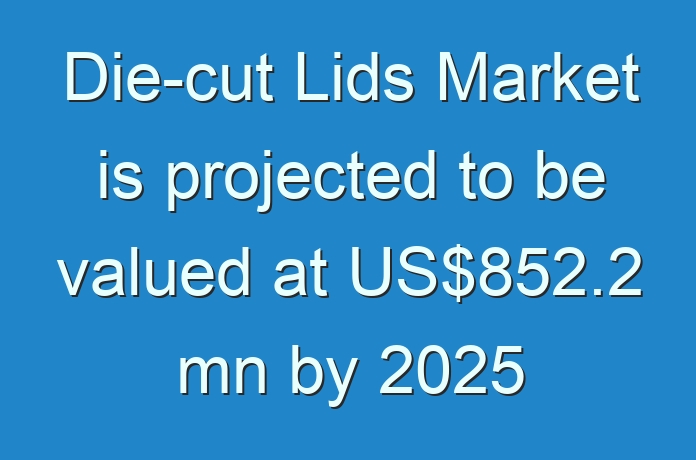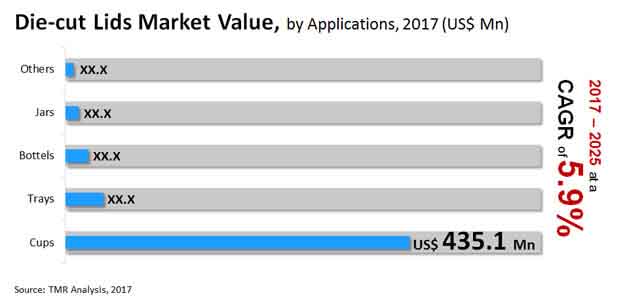
The die-cut lids market is displaying impressive growth over the past couple of years due to increased consumption of packaged food and beverages across the globe. Die-cut flexible lids are generally pre-cut lids to the size of the container such as cups, trays, jars, etc. and are primarily used for packaging food products, beverages, and healthcare products. Die-cut lids offer advantages of easy peeling, provide barrier towards light, oxygen, and moisture, and maintain aroma of food products which are expected to create significant growth opportunities for players in this market. Apart from this, cost-effectiveness, temperature sustainability, and light in weight features of die-cut lids is expected to have a positive impact on their adoption for packaging needs.
Also, brand owners are increasingly using die-cut lids as a marketing platform and capitalizing on the opportunity of using printed die-cut lids.

Brand Promotion Objectives Bode Well for Printed Die-cut Lids Segment
The global market for die-cut lids is segmented into paper, plastic, aluminum foil, and others in terms of material type. On the basis of form type, reel form lids and pre-cut form lids are the segments into which the die-cut lids market is segmented. Of the two, pre-cut form lids is estimated to display the leading CAGR of 5.9% between 2016 and 2025.
By sealing type, the market is segmented into heat seal and sealant coating. The segment of heat seal is anticipated to expand at a CAGR of 6.1% between 2017 and 2025 and is expected to account for 80% of the market by the end of 2017. On the other hand, the segment of sealant coating is expected to display a diminished market share between 2017 and 2025.
The print type segments into which the die-cut lids market is segmented are printed die cut lids and un-printed die cut lids. Of the two, printed die cut lids is estimated to garner 88.4% share of the overall market by 2017. This is because printed die cut lids are increasingly being used for brand promotion in order to increase the sales of packaged foods and are thus gaining traction over the past couple of years.
Embossed lids and unembossed lids are the segments by which the die-cut lids market is divided on the basis of embossing type in this report. The segment of embossed lids is anticipated to lead the global die cut lids market displaying the leading growth rate over the forecast period. By revenue, the segment of embossed lids is anticipated to expand at a growth rate of 6.1% between 2017 and 2025.
In terms of end-use, the die-cut lids market is divided into food products, beverages, healthcare, and others in this report. Among these, the segment of food products is anticipated to lead the global die-cut lids market displaying the leading growth rate over the forecast period between 2017 and 2025.The segment is estimated to account for 80.4% of the overall market by the end of 2017.
The segment of beverages follows food products and is estimated to hold the second-leading share of 14.5% in the market by the end of 2017.
Ask for brochure:
https://www.transparencymarketresearch.com/sample/sample.php?flag=B&rep_id=22391
Asia Pacific to Display Leading Growth Rate by 2025
The report studies the global die-cut lids market with respect to the regional markets of North America, Asia Pacific, Latin America, Europe, and the Middle East and Africa. Asia Pacific, among these is anticipated to be the most attractive regional market rising at a CAGR of 7.0% between 2017 and 2025.
Key players in the die-cut lids market profiled in this report include Amcor Limited, Winpak Ltd., CLONDALKIN GROUP, Watershed Packaging Ltd., Uflex Ltd., Barger Packaging Inc., Bemis Inc., Sealed Air Corporation, Constantia Packaging, Berry Plastics Group Inc., and Tadbik Ltd. among others.
Read Latest Press Release By TMR:





